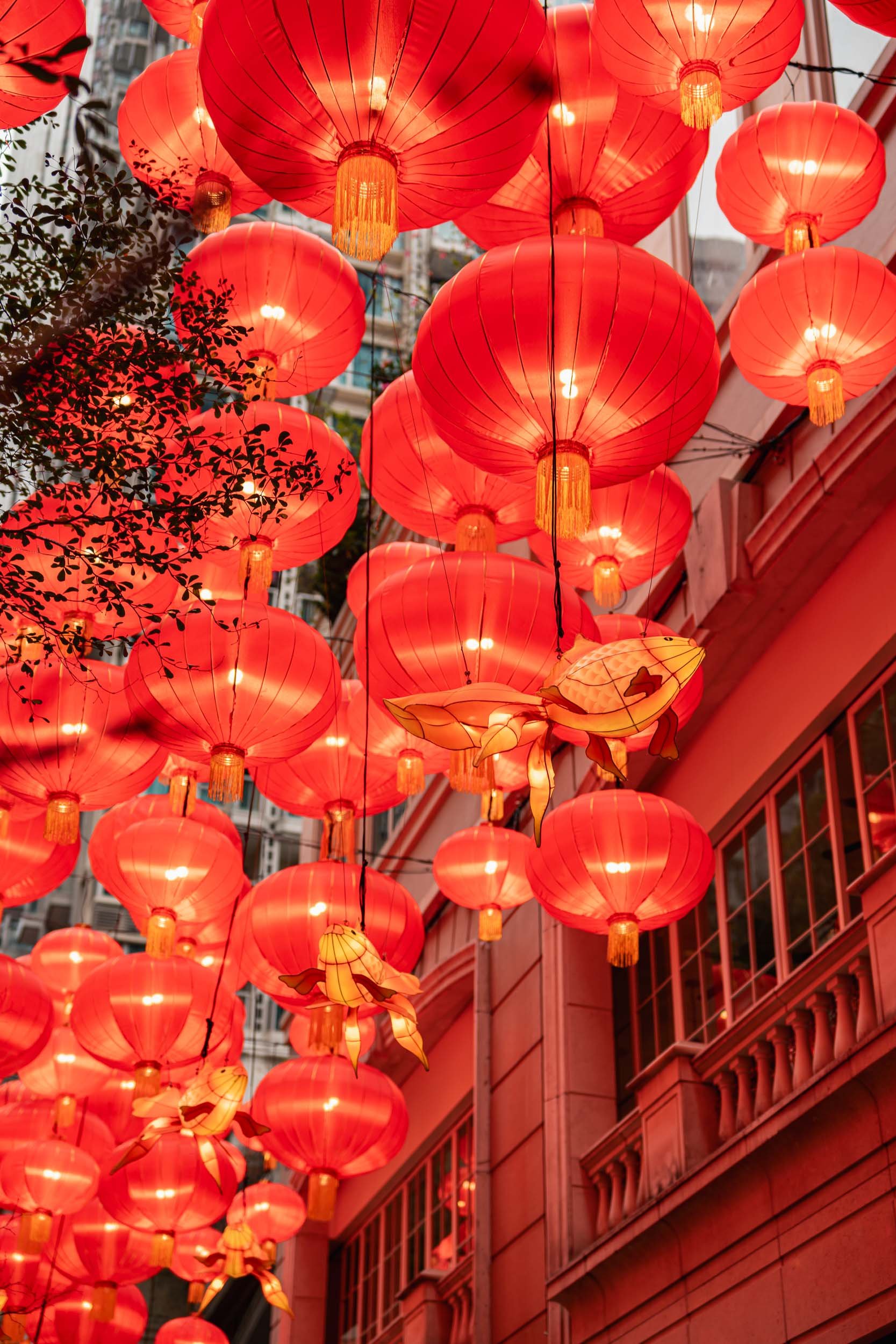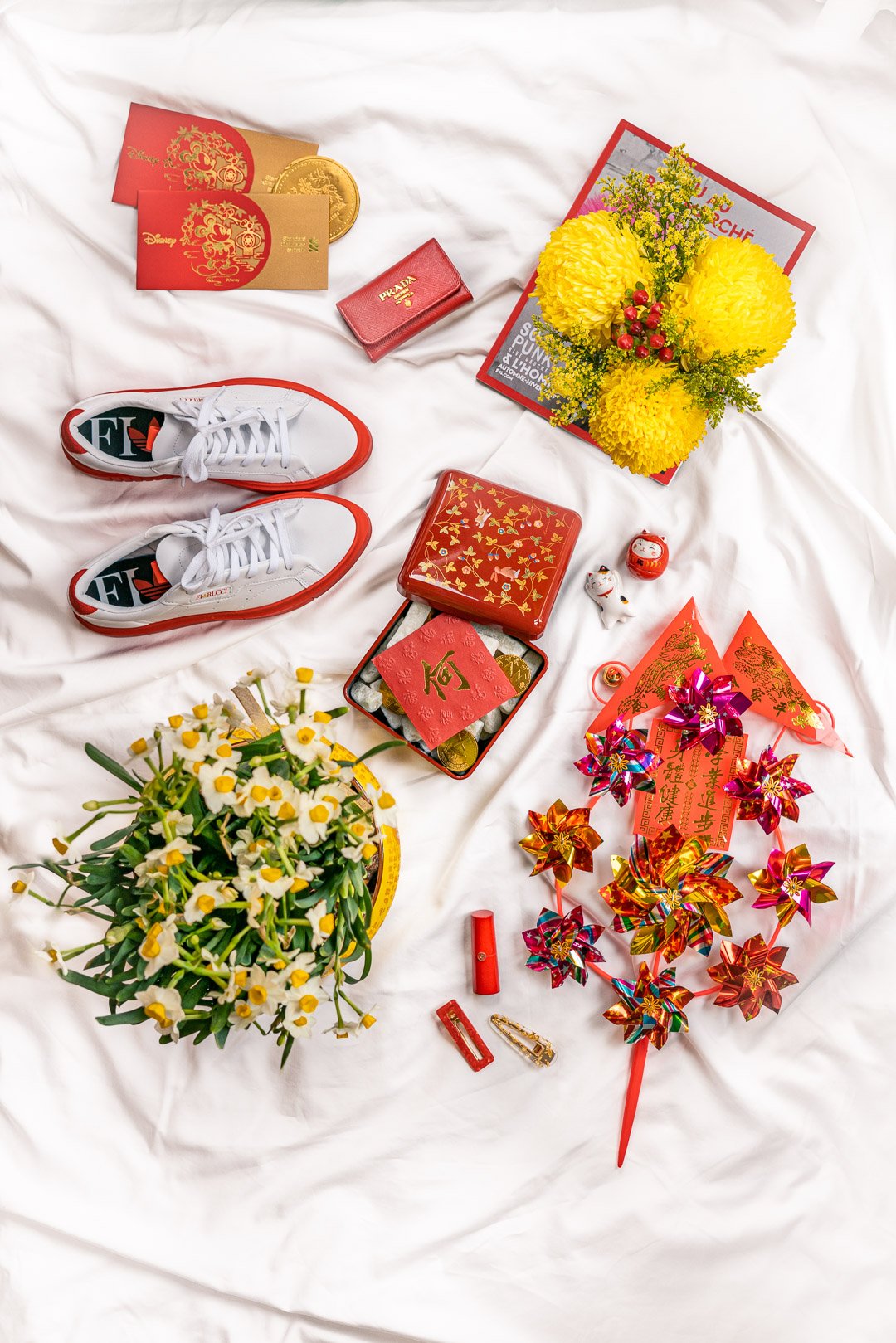Warring States Cyberpunk: A Mesmerising Journey To A Future Existing In The Past
Psychedelic colours, (cute) robots moving in sync, reimagined characters from imperial China. What else?
When you say cyberpunk, thoughts of dystopian cities in perpetual nightfall and skyscrapers cities glowing in the fog come to mind. Neither of which is really my thing… or so I thought. Turns out I just hadn’t come across the right aesthetics that preserved the charm of the genre while infusing it with elements that keep it grounded – Kongkee’s exhibition made me fall head over heels into his alternate universe.
The Exhibition
Kongkee: Warring States Cyberpunk revolves around historical figures from the Warring States period in imperial China, fictionalised in a fantastical alternate reality:
Qu Yuan 屈原 – Qu Yuan served King Huai of Chu and is known for his remarkable poetry and famous suicide. After being exiled, he threw himself into the Miluo River out of political despair and dejection, a decision seen as an ultimate act of patriotism. He was so well-loved by the common people that after he drowned, they threw rice dumplings into the river and beat drums to deter fish from devouring his body; traditions that now live on as the Dragon Boat Festival.
Qin Shi Huang 秦始皇 – Qin Shi Huang started as the ruler of the state of Qin in the west of China and conquered all the other Warring States during his reign, thus becoming the first emperor who unified China. Ironically, despite his quest for immortality, he died at age 49 and only ruled the unified country for eleven years.
King Huai of Chu 楚懷王 – During the Spring and Autumn and Warring States periods, Chu was a significant power in the southeast of China, eclipsed by the neighbouring Qin. The king spent his final years in captivity and tragically died in Qin.
2,200 years after Qu Yuan’s death, Kongkee reimagines his resurrection in a vivid universe, transforming Tai Kwun into an imaginative universe that blurs the lines between the past and the future.
In 2022, the exhibition debuted at the Asian Art Museum of San Francisco before touring the Wrightwood 659 Museum in Chicago in 2023. Each iteration of the show was designed to form an organic relationship with the exhibition space:
Asian Art Museum, San Francisco – Exhibited alongside bronze and jade antiques from the Warring States period, Kongkee reimagines motifs from the museum’s collection in dazzling colours.
Wrightwood 659, Chicago – Tadao Ando’s architecture interacts with concrete and natural light, mimicking the note of retro-futurism in Kongkee’s art.
Tai Kwun, Hong Kong – Recontextualised by Tai Kwun's past as a former police station compound, the exhibition speaks directly to the architecture itself while weaving together retribution, power, and history.
The Artist
Kongkee (Kong Khong-chang 江康泉) is an award-winning animation director and visual artist born in Malaysia and raised in Hong Kong. Known for his vibrant, daring use of colours and cyberpunk aesthetics, he uses everyday life as a starting point in his work, often featuring elements from the Hong Kong era he grew up in. In more ways than one, the exhibition’s stop in Hong Kong is his homecoming.
The Artwork
Taotie 《饕餮》
The Parade Ground entrance to the Duplex Studio is flooded with a red glow that feels ominous: an otherworldly opening to the pieces to follow.
According to ancient Chinese mythology, Taotie is one of the four evil creatures of the world and sports a grotesque appearance (including eyes under the armpits, ew), symbolising gluttony and humans’ insatiable desire for more.
Kongkee fashioned the neon piece in a redesigned motif, where the unmistakable swoop of the mythological horns becomes intertwined with social media icons and desperate pleas for attention: “love me”; “like me”.
Past / Present / Future / Bleeding / Tearing / Drifting
《過去.現在.未來.流血.流淚.流浪》
In addition to selected works from the Asian Arts Museum showcased on past stops, Kongkee created commissioned pieces for the latest exhibition venue, including a dynamic centrepiece illuminating the vaulted ceilings of the Duplex Studio.
While Tai Kwun’s history and much of its architecture served a surveillance and monitoring purpose, the Duplex Studio has a starkly different atmosphere. The high ceiling and three sets of glass windows give the hall a meditative quality, like a church. (Visitors of Vital Signs, one of the previous exhibitions occupying the space, may have a stronger sense of why the room feels so.) Kongkee wanted to transform it into a contemporary hybrid between a church and a theatre, illuminated by LED installations resembling stained glass windows that imbued a sense of solemn spirituality.
The large-scale work comprises three channels of intertwined narratives: the past, present, and future, where three unrelated characters shed blood and tears in the river of time. It’s not implied whether the three are isolated or connected or whether time is cyclical and repeating. Instead, the audience can sit on moon-rock-like seats and quietly ponder these questions and come to their own conclusions.
You Can Never Step in the Same River Twice
《你永遠無法踏進相同的河流兩次》
The drowning suicide of Qu Yuan inspired Kongkee to conceive a parallel universe where Qu Yuan’s body perishes in the depths of the Miluo River (汨羅江), but his memories are downloaded and inherited by the android “Joe”. Will he make the same choices as Qu Yuan did 2200 years ago?
As Heraclitus proclaimed and Pocahontas sings, you can’t step in the same river twice – the water’s constantly changing and flowing. The concept of reincarnation separates the soul from the body, like how the river segregates John Doe’s body in the video installation. Played on loop, his feet traverse the riverbed at their own pace before eventually wading back in sync with the upper body again – does our soul travel the same way between bodies?
Time Pause Became Mountain, Time Move Became Water
《時間停頓就是山,時間流動就是水》
The second neon installation of the exhibition is another new site-specific work that explores the dialogue between the past and the present. A series of hand gestures mimic the gentle undulating of mountains and water while neon colours light up sequentially like a wave pushing forward relentlessly.
Time is relative. When we think of neon lights, we think of a sunset industry that has taken generations to go downhill when, in reality, it will only occupy a heartbeat in the grand scheme of things. As for the mountains and seas, they are ever-changing and will continue to morph, just that we cannot witness it in our short life span.
Due to Tai Kwun’s architecture, the audience can only catch glimpses of the work through the porthole-like windows, much like how humans will only ever experience a fleeting span in history and time.
Dragon’s Delusion 《離騷幻覺》
The animation film Dragon’s Delusion forms the exhibition’s backbone and is tucked away in a dark room. Its title comes from Li Sao 《離騷》, the famous melancholic poem by Qu Yuan, and is based on the comic series Mi Luo Virtual 《汩羅虛擬》that started in 2013, the genesis of Kongkee’s cyberpunk alternate reality.
Funnily enough, the shorts were produced back to front (Departure started in 2017), and it’s the first time for them to be delivered in sequence:
Dragon’s Delusion: Preface 《離騷幻覺一序》
Dragon’s Delusion: Assassination 《離騷幻覺—刺秦篇》
Dragon’s Delusion: Departure 《離騷幻覺一汨羅篇》
They total over half an hour and are part of a feature-length animation film in production. Dragon’s Delusion: Preface won the grand prize of the 22 DigiCon6, the top honour of its nature in Asia.
The trilogy follows a fictional Qu Yuan from the Warring States period, who returns through memories recorded in a cassette tape in the body of the salvaged robot “Joe”. The robot confronts Emperor Qin Shi Huang, who unified China under an absolute tyranny that lasted for eternity by unlocking the secret to immortality and creating robot technology. By reinterpreting the legacy of imperial China and cyberpunk from the vantage point of a Hong Kong citizen, the piece subtly throws shade on the city’s political landscape and draws parallels to the dominance of capitalism.
The art snob in me hates the majority of video installations I see at exhibitions. But Dragon’s Delusion captivated me (and many other fellow visitors) in front of the screen with its relatable context and riveting aesthetics. Kongkee, having been fascinated by old-fashioned printing and colour schemes, describes the dramatic use of punchy, shocking colours as very retro Hong Kong, often substituting red in place of black for visual impact.
Kongkee’s upbringing in Hong Kong and love for local cultural symbols is also evident in his work, from landmarks such as the old Lee Theatre and Yau Ma Tei Theatre to trams, taxis and everyday details we don’t usually bat an eyelash at. The low-life high-tech dystopia presents an uncannily realistic landscape while meshing sci-fi with different generations of Hong Kong.
Comic books are always fun to read, but the illustration style makes – or breaks – the series. Dragon’s Delusion’s colours and flat rendering of light and shadow reminded me of risographs, known for their unique, vivid colours and perfect little imperfections. Kongkee has successfully crafted the psychedelic colours of his comic books into a slick animation that is cyberpunk but also aesthetically pleasing, entirely different from anything I had seen before.
The Making of the Exhibition
The exhibition ends with a behind-the-scenes room, where overlapping sketches in black and blue take the spotlight. A comic desk with books from Kongkee’s personal collection sits in the corner, playing an interview the artist gave on Dragon’s Delusion.
Kongkee wanted to recreate the look and feel of drawing with a lightbox and decided to display his original manuscripts for authenticity even though constant heat from the lamp may cause degradation to the paper. Visitors will recognise some iconic scenes from Dragon’s Delusion and its main characters in cyberpunk landscapes with a touch of Hong Kong realism.
Thoughts
Kongkee: Warring States Cyberpunk was a delightful breath of fresh air for the stereotypical genre.
The selection of works, old and new, may have been sparse, but they were carefully curated and gave life to the Tai Kwun exhibition space. Their varying lengths and mediums also brought about variety and an immersive narrative without being suffocating, and there was little pressure to rush through or beeline for specific works. While the colour-fanatic in me was utterly mesmerised by Dragon’s Delusion, I can’t deny that I would have been gladly sit in front of the magnificent Past / Present / Future / Bleeding / Tearing / Drifting for an entire afternoon.
Aesthetics aside, cyberpunk narratives often carry darker notes of societal decay and rebellion. Toss in a handful of philosophical questions on individual agency, power and immortality that have haunted humankind throughout history, and the exhibition masterfully weaves together an interplay of technology, history, and desire. What is identity without memory? Or the true meaning of justice and freedom?
“Being an artist is trying to be free from the imagination, free from all those rules and boundaries. And that includes understanding yourself.”
Related Posts
























